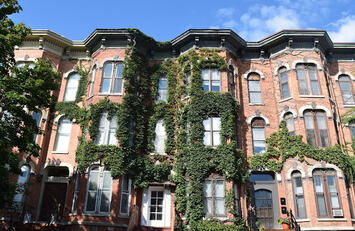
Back in 2018, I attended and participated in an event called “Tools Toward Market Restoration”, hosted by the Federal Reserve Bank of Chicago. The event was held in Detroit. At the event I got a chance to meet Richard Rothstein, author of The Color of Law: A Forgotten History of How Our Government Segregated America, a fantastic book about government-sponsored segregation in America. The book garnered quite a bit of attention at the time for reintroducing the phrase “redlining” to the public, but truly explored all of the segregation tactics (racial covenants, public housing policy, urban renewal, Interstate highway development, white flight, blockbusting, and mob violence, among others) utilized in this country. It’s a wonderful book that blows up the myth of any distinction between de jure and de facto segregation – each type feeds the other.
Following Rothstein’s presentation I remember asking him if he thought cities that were deeply segregated like Detroit had suffered most acutely from segregationist policies and actions. When he said no, the nation’s been impacted equally, I disagreed. My thinking was that certainly places that were on the front line of divisive policies, such as mid-century manufacturing centers like Detroit, bore the brunt. Intuitively, I reasoned that segregation was an exercise in property depreciation for some, but property appreciation for others.
Turns out that we were both right. Cities like Detroit did suffer far more from deep segregation as the nationwide decline in manufacturing took hold in the 1970’s and beyond. But all cities suffered because all levels of government, the real estate industry and homebuyers and renters all employed the same practices to maximize value. And all of us are paying for it as a result.
In the last entry into this series, I wrote about Yonah Freemark’s study of upzoning's impact on Chicago property values from a few years ago. He found that the act of upzoning and any resulting new housing construction could produce a short-term boost in property values, rather than a decline, because property owners see an opportunity to recoup their investment. There’s even a name for it – housing exuberance.
But if we want to place blame on NIMBYism (Not-In-My-Back-Yard) for today’s affordable housing crisis, I suggest starting with studying the OG of NIMBYism causes, Black/White segregation in American cities.
How NIMBYism became learned behavior
Brookings Institution Senior Fellow Andre Perry has done exactly that. Perry has written extensively about the devaluation of homes in majority Black neighborhoods across the country. In a study he conducted in 2018, Perry found that home values in neighborhoods with a Black population of 50 percent or more were valued at 50 percent less than homes with few or no Black residents. When adjusted for homes of similar quality and amenities, Perry found that homes are still worth 23 percent less in majority Black neighborhoods, or about $48,000 per home on average, when compared to neighborhoods with few or no Black residents.
When Perry’s study was published, he estimated that the cumulative loss of wealth to Black homeowners was about $156 billion. Perry noted that the study found “a positive and statistically significant correlation between the devaluation of homes in Black neighborhoods and upward mobility of Black children in metropolitan areas with majority Black neighborhoods.”
Read the rest of this piece at Corner Side Yard Blog.
Pete Saunders is a writer and researcher whose work focuses on urbanism and public policy. Pete has been the editor/publisher of the Corner Side Yard, an urbanist blog, since 2012. Pete is also an urban affairs contributor to Forbes Magazine's online platform. Pete's writings have been published widely in traditional and internet media outlets, including the feature article in the December 2018 issue of Planning Magazine. Pete has more than twenty years' experience in planning, economic development, and community development, with stops in the public, private and non-profit sectors. He lives in Chicago.
Photo: courtesy Corner Side Yard Blog












